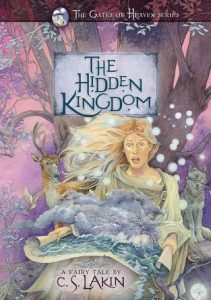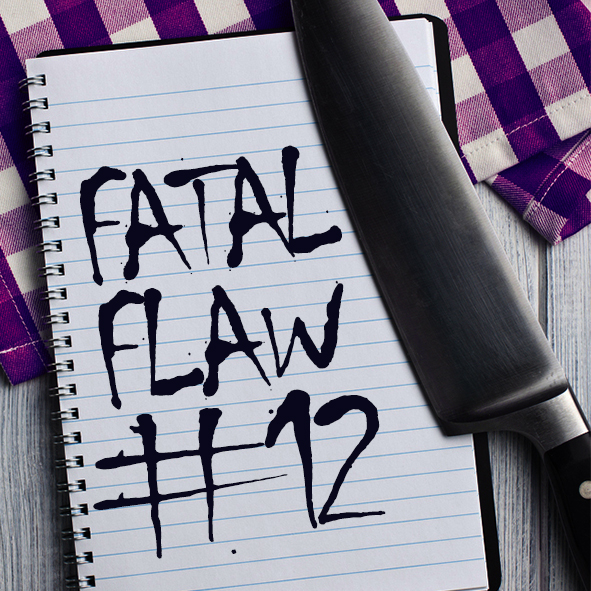How to Weave a Subplot into the Structure of Your Novel
This week we’re going to explore how novelists can layer a series of scenes over the foundational structure that’s already in place. We’ve been spending some weeks going over the ten key scene types that most writing instructors would agree are the important ones to lock in.
You can download this handy chart that defines what these ten scenes are and where, approximately, they should be positioned in your story. While it’s perfectly fine to veer off this structure, and many novels do so successfully, this lines up with what most great novels—and films and plays—follow, regardless of genre.
So what we’re going to be doing for a number of weeks is look at the next ten scenes that you can build atop those primary scenes. I’ve been likening this process to filling a jar with rocks. You want to put the big rocks in, then the pebbles, then the sand, followed by water in order to fill a jar fully.
To “fill a story” to the brim, it can likewise make sense to start with the essential plot developments in a story and get them solid before working on the next set of scenes. This is a completely different approach to outlining or plotting, as it’s filling in the spaces rather than starting at the beginning and figuring out the entire plot as you plod along.
This is another long and deep post, so settle in and be ready to rack your brain a bit. Ask questions in the comments if you need some clarification.
Consider Adding Your Subplot in Later
To me, it’s much more logical, and I mentioned last week that though I’ve never done this specifically with any of the novels I’ve written, I always have worked out those key scenes first and then filled in around them. I suppose I’ve been filling my “story jar” this way all along.
So I’m glad to finally have something structured here to share with you, so you can find the process of outlining and plotting fairly easy and straightforward. I do find this an easy way to plot my novels, and I hope you do too.
So, let’s take a look at my detective novel A Thin Film of Lies. I’m using that example because 1) I know that I used this exact method of layering in my subplot elements and 2) I can share the process I went through and why. I have no idea if any other writer in the world does this kind of layering with subplots, but I will say this: after using this method, it’s the method of choice for me. I’m looking forward to writing more novels this way.
I mentioned that I had already finished writing my novel before I wove in my big subplot. Then after brainstorming the exact plot (sub-story) I wanted to add into the novel, I wrote all the scenes in a separate document. That way I could read through them all in a cohesive way.
See, if you write your subplot as you go along, that’s fine, so long as you’ve done an extensive outline and have carefully placed each scene where it best goes and you’ve made sure each builds fluidly from the prior scene. But when you write all the scenes in one document (just use a scene break between each one), you can read straight through and see the flow, smooth development of the plot and character arc, and see what might be missing.
 When I wrote The Hidden Kingdom, I used a story within a story, so I did this very same thing. All the scenes with Alia and her husband and son on another planet were written in a separate document. I had five full scenes, including the opening and closing scenes of the novel. In these scenes, Alia is basically telling the plot of the novel to her son as a bedtime story. But these are detailed scenes, not just short excerpts. By using this same method of layering, I was able to achieve, with ease, the effect I intended and found it a perfect way to keep continuity and flow.
When I wrote The Hidden Kingdom, I used a story within a story, so I did this very same thing. All the scenes with Alia and her husband and son on another planet were written in a separate document. I had five full scenes, including the opening and closing scenes of the novel. In these scenes, Alia is basically telling the plot of the novel to her son as a bedtime story. But these are detailed scenes, not just short excerpts. By using this same method of layering, I was able to achieve, with ease, the effect I intended and found it a perfect way to keep continuity and flow.
What then? Once you’ve written all those scenes and you’ve created a kind of mini novel with your subplot (because you will have a beginning, middle, climax, and ending), you determine where to place each scene.
Last week I gave you a brief overview of my novel A Thin Film of Lies. Here’s how I worked in the subplot scenes. If you have your chart, you can see where these scenes fall between them.
Remember: the elements connected to the subplot can come out in dialogue and thought in small bits throughout the book, and should, because your character, while at work or play, will be thinking about this important Plot B in her life. But these are full scenes, which you need with strong subplots.
Before the first full subplot scene, I’ve set up that Fran is having issues with her teenage son Trevor. We’ve met him and seen this, and seen Fran’s worry over him.
Chapter 11 (35% mark): Fran goes as chaperone on a class trip with son. At the park, she stumbles upon a drug sale gone violent that involves a couple of Trevor’s classmates and intervenes. Trevor is angry and embarrassed at her mother’s cop actions.
Chapter 15 (52%): Fran is called into school. Trevor is in the principal’s office, accused of hacking the school’s computers to change grades. He swears he’s innocent but evidence proves otherwise. Parallels Fran’s case, with Jepson arrested for hit-and-run and swearing he’s innocent. [We later see a short bit showing Fran set up an IT expert to go to the school and investigate the claim.]
Chapter 16 (58%) Fran plays softball with coworkers. Reveals the backstory about her marriage, her husband leaving without a word ten years ago, that ten-year anniversary looming, and how it ties in with her disconnect with Trevor, how she’s tried to be the best mom but feels she’s failed.
Chapter 18 (65%): Fran is home. Daughter Megan arrives distraught. Her boyfriend broke up with her, feels she’s so unlovable. This unleashes Fran’s insecurities and loneliness, and emphasizes Fran’s need to be perfect and please everyone, never make a mistake.
Chapter 19 (71%): Fran finds Trevor at the park. She tries to talk to him. She has good news—turns out, due to her efforts, that evidence proves Trevor was set up (just like Jepson). He gets angry—she didn’t believe he was innocent even though he insisted he was. He accuses her of not having faith in him. She mentions that his dad leaving is at the heart of all his pain. He feels like he’s a loser, and confesses that he believes that’s why Dad left. Then storms off. This starts Fran’s descent into emotional darkness.
(95%): After the main plot climax, Fran leaves the new crime scene and arrives home with blood on her clothes. Trevor freaks at the sight, and Fran is feeling completely vulnerable. Today is the tenth anniversary of her husband leaving. Fran and Trevor have the healing heart-to-heart when Fran breaks down, blames herself for hubby leaving, for being a terrible mom, and realizes she’s tried to be the perfect mom and that her efforts have backfired. What her kids need is for her to fail, to be imperfect. Fran has her big epiphany and faces her greatest inner fear. She comes into her essence through the subplot with Trevor. They finally talk about Dad for the first time and healing results.
I put that sentence in bold because I want you to pay close attention: the resolution of the subplot is the moment when the protagonist comes into her essence. If you can make this happen with your subplot, you will hit the stars. Sure, Fran is happy the main plot elements are concluded, but that doesn’t really deal with her problems. And that’s all about her character arc. Spend time on this!
Note also that the subplot resolves after the main plot is resolved in the climax. Both plot goals (Jepson and Trevor exonerated for their supposed crimes), but it’s in this scene, with the subplot, that the spiritual MDQ is resolved.
In other words, Fran solved the police case, but when she leaves for home after it’s all over, the subplot needs to wrap up. Yes, I had the outer plot sealed with Trevor’s innocence proven back at that 70% mark (that case now closed), but the actual subplot—which is really about Fran’s relationship with her son—doesn’t resolve until the end of the novel.
So, sure, there are many ways you might weave in a subplot, and the number of scenes you have may vary, but here’s a basic way you could layer that second set of ten scenes (I’m going to put them in order as they’d appear in your novel but keep the numbering based on the layering system. The scenes in bold are the next set of ten.):
#1 – Setup. Introduce protagonist in her world. Establish her core need. Set the stage, begin building the world, bring key characters on stage.
#11 – introduction of subplot. Set up the situation between the characters to show the existing tension and attitudes that is causing conflict.
#2 – Turning Point #1 (10%): inciting incident.
#12 – Show how the inciting incident affects the subplot. It may trigger it, bring it to the forefront. Have something initially happen with the subplot to bring in problems and complications.
#3 – Pinch Point #1 (33% roughly): Give a glimpse of the opposition’s power, need, and goal as well as the stakes.
#13 – New subplot development that mirrors or is opposite of the main plot. In other words, show what key opposition your protagonist is facing and how she feels about it (a mirroring pinch point, in essence).
#4 – Twist #1: Something new happens: a new ally, a friend becomes a foe. New info reveals a serious complication to reaching the goal. Protagonist must adjust to change with this setback.
#14 – Progress with the subplot. Similar to the main plot, the character is trying to deal with the subplot issues, complications, and setbacks. Tension builds as things are getting more difficult or problematic.
#5 – The midpoint (50%): No turning back. Important event that propels the story forward and solidifies the protagonist’s determination to reach her goal.
#15 – Things start coming to a head and creating high tension with the subplot. Now that the protagonist is committed to going all-in after her goal, the subplot adds stress to her load.
#6 – Pinch Point #2 (62% roughly): The opposition comes full force. Time to buckle down and fight through it.
#16 – Developments with the subplot reach critical mass. Things are falling apart, looking hopeless.
#7 – Twist 2: An unexpected surprise giving (false?) hope. The goal now looks within reach. A mentor gives encouragement, a secret weapon, an important clue.
#17 – Subplot feels at a standstill. Protagonist has no time to deal with it and so this creates more tension. Or something in the subplot could provide the help, insight, clue the protagonist needs to push harder to the goal.
#8 – Turning Point #4 (75%): Major setback. All is lost and hopeless. Time for final push.
#18 – Same issues with the subplot. Seems unresolvable. Something happens that closes doors. Or the subplot might be resolved outwardly, but the desired emotional state is illusive.
#9 – Turning Point #5 (76-99%): The climax in which the goal is either reached or not; the two MDQs are answered.
#19 – The key scene that resolves the subplot in a completely satisfying, full way. The character has achieved the emotional resolution she’s wanted from the start.
#10 – The aftermath (90-99%): The wrap-up at the end. Denouement, resolution, tie it all in a pretty knot.
#20 – A final, parting shot of the happy result of the subplot wrapped up. This could be included in the last scene (above) as the two plot elements merge together, or they might be separate scenes within the final chapter(s).
Note, too, that the subplot may not directly be about your protagonist. You may have a dual-protagonist story, as you find in romance novels. So the subplot could be all about a secondary character. But keep in mind: every subplot should serve the needs of your main plot and impact the protagonist as she goes after her visible goal for the novel. This is crucial. If you don’t follow this rule, you will have confusing, purposeless subplots that don’t have a place in your book.
Also keep in mind that when you get to the end, once the plot and subplot have been resolved fully, you want to end your novel. “Get in quick; get out quick.” Tie up all the loose ends, bring the cast of characters on stage, wrap it all up in a nice package in a tight, concise way (whether immediately after the climax in time, or in an epilogue of sorts a few weeks or months later).
But don’t drag out your ending. These last scenes are going to be short and sweet, preceding those two wonderful words: The End.
Play around with this. You might not intersperse each of the second ten scenes (subplot scenes) so evenly in this way. You might have two back-to back scenes and then nothing for a while. It really depends on your main plot.
But the idea is to drop in those backstory scenes every so often in key places and build to the climax of the subplot as you build to the climax of the main plot.
I believe this is the strongest structure. I’ve seen novels with purposeless subplots, subplots that play out entirely in just the middle of a novel, and subplots that are underdeveloped so as to lack impact.
So first work out a strong subplot that amplifies the themes of your novel, then create an outline of scenes, then write those scenes. Try writing them in a separate Word doc, then, when you’re ready, carefully read through your novel and see where to insert those scenes. You may need to add a few more, or add in a few lines here and there in other scenes to prepare for what’s to come.
If you don’t really get this, maybe try reading A Thin Film of Lies and take notes on the scenes as you go through (you can listen to the audio book, if you prefer!). I think this method will make a whole lot of sense if you see it in action.
Next week we’ll look at how one of my editing clients wove in a beautiful thematic subplot in her award-winning novel.
Any questions? Thoughts? I can think of a number of novels I’ve written and read that would work with this 20-scene structure. Does it work with yours? What subplot have you come up with?












C.S. Currently drafting, sticking with the main story line, telling myself once done, then I’d add the subplots.
Tres cool!
Great! Let me know how this works for you. Make a chart and share it with me!
Will do!
I don’t think I could plot out the subplot separately from the main plot from the beginning, but maybe that’s just because I’ve never had great success with plotting in general. I have had to go back through my drafts and rearrange chapters and scenes to make the two plots weave more seamlessly together–thank goodness for word processing technology. Don’t think I could do it longhand!
This was so helpful! I’ve been struggling with not having enough content for the storyline in my novel, but with a subplot, the story will not only be longer, but much more deep and meaningful. Thank you for the help!